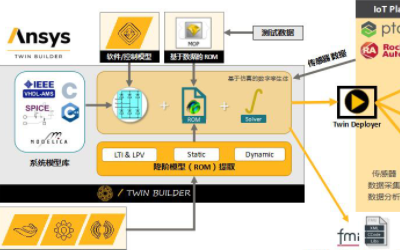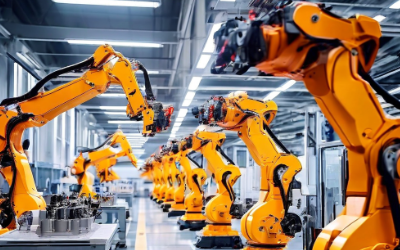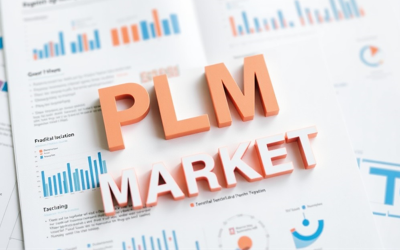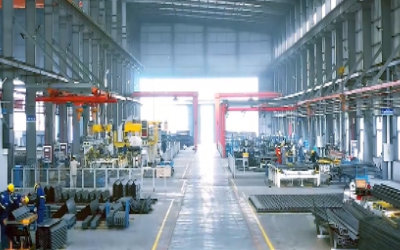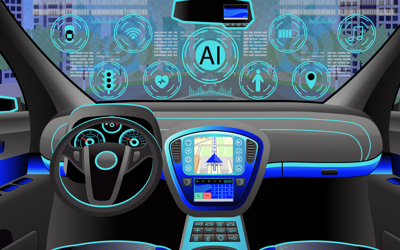Integrate digital manufacturing with real enterprise
In October, I interviewed Mr. Hans-Kurt Lübberstedt at Wuhan, on the 2008 greater China user conference of Siemens PLM Software. Hans-Kurt share his view about the newest achievement of Siemens PLM Software on technology and business, and also introduced the growing status of Siemens PLM Software in China.
In October, I interviewed Mr. Hans-Kurt Lübberstedt at Wuhan, on the 2008 greater China user conference of Siemens PLM Software. Hans-Kurt share his view about the newest achievement of Siemens PLM Software on technology and business, and also introduced the growing status of Siemens PLM Software in China.
Pei Huang: As a part of Siemens, Siemens PLM Software could integrate PLM with automation, the solution of managing digital enterprise and real enterprise. Is it the key difference of Siemens PLM Software, compared with your competitors?
Hans-Kurt: Yes. We have such chance to differentiate from our competitors because we have the unique opportunity. With Siemens, especially the Siemens expertise of production, we can give different value for the customers than a pure PLM company who doesn’t have this connection. So we think this is our unique advantage.
Hans-Kurt: Yes. We have such chance to differentiate from our competitors because we have the unique opportunity. With Siemens, especially the Siemens expertise of production, we can give different value for the customers than a pure PLM company who doesn’t have this connection. So we think this is our unique advantage.
Pei: Are there any bad impact to Siemens PLM Software when the competitors of Siemens choose PLM solution?
Hans-Kurt: The acquisition completed in Feb 2007. At that time we were unsure about how the Siemens competitors would react. Then, we made deep discussion with some of our key customers, which are the competitors of Siemens, such as General Electric, Emerson, Rockwell, ABB and ALSTOM, etc. We were very impressed with their attitude. They thought that we were really professional enough and they could separate the competition areas and the cooperation areas with Siemens. Siemens is a very large company and there are many different divisions, so do those competitors. It had no impact to our cooperation status with our key customers.
Hans-Kurt: The acquisition completed in Feb 2007. At that time we were unsure about how the Siemens competitors would react. Then, we made deep discussion with some of our key customers, which are the competitors of Siemens, such as General Electric, Emerson, Rockwell, ABB and ALSTOM, etc. We were very impressed with their attitude. They thought that we were really professional enough and they could separate the competition areas and the cooperation areas with Siemens. Siemens is a very large company and there are many different divisions, so do those competitors. It had no impact to our cooperation status with our key customers.
Pei: Recently, there is a hot topic in China that Chinese manufacturing is going to winter, what’s your view about the status of Asia and Chinese manufacturing?
Hans-Kurt: The world is connected nowadays. So I don’t think that any economy is separated from the others anymore. When the financial issues and slowdown occurred, it will impact any parts of the world. But I strongly believe that Asia is in better situation than the other areas, primarily because the infrastructure of the Asia manufacturing sector has developed so strong, and has Asia manufacturing still has low cost advantage than western countries. Another key point is that, besides the huge export of Chinese manufacturing, Chinese domestic market has become much stronger than used to be 10 years ago, so Chinese economy has become more stable. So, I think the Asia and Chinese manufacturing will also slowdown, but it will not as severe as economic crisis in 1997.
Hans-Kurt: The world is connected nowadays. So I don’t think that any economy is separated from the others anymore. When the financial issues and slowdown occurred, it will impact any parts of the world. But I strongly believe that Asia is in better situation than the other areas, primarily because the infrastructure of the Asia manufacturing sector has developed so strong, and has Asia manufacturing still has low cost advantage than western countries. Another key point is that, besides the huge export of Chinese manufacturing, Chinese domestic market has become much stronger than used to be 10 years ago, so Chinese economy has become more stable. So, I think the Asia and Chinese manufacturing will also slowdown, but it will not as severe as economic crisis in 1997.
Pei: Chinese manufacturing companies are facing more and more pressure. Maybe some of them will cut their IT budget. But to improve the core competence, manufacturers need to invest on R&D technologies, including PLM. So, how do you think about the economic slowdown will impact PLM industry?
Hans-Kurt: We have already observed that some companies are cutting IT cost. It’s truly happened, so the question is where to be cut. One of the initiatives of manufacturers to deploy IT system is to reduce cost. ERP could really improve the efficiency of the process, such as administration and finance, and reduce cost. But, at the hard time of economics, the key to get the competitive advantage is innovation. Innovation is more important than cost reduction. PLM could help manufacturers to make better product, be more innovative and get more business opportunity. So, we work very hard to persuade our customers to pay more attention on innovation to get competitive advantage and sustainable growth. We have seen a large Chinese manufacturer who has made decision to reduce IT budget substantially, but they decided to continue deploying PLM. PLM is so important for them to maintain their competitiveness.
I strongly believe that the product is the heart of a company, because for several years, western companies begin to outsource the production to India, China or Southeast Asia, but they don’t outsource product development. Product is the key difference of a manufacturer. For a long time, China has been the powerhouse of the world. Most manufacturers thought that production was more important than the product innovation. 7 years ago, most cars were built by joint venture in China. Those cars were just made in China. But the situation has changed rapidly. Now, there are many Chinese own brand cars, such as Cherry, JAC, etc. These car makers design their cars here in China. And many leading Chinese companies, for example Haier, have been internationalization, they need to be more innovative and design cutting edge product. So, China is changing rapidly from production center to product innovation center, and PLM is the key engine of product innovation.
Hans-Kurt: We have already observed that some companies are cutting IT cost. It’s truly happened, so the question is where to be cut. One of the initiatives of manufacturers to deploy IT system is to reduce cost. ERP could really improve the efficiency of the process, such as administration and finance, and reduce cost. But, at the hard time of economics, the key to get the competitive advantage is innovation. Innovation is more important than cost reduction. PLM could help manufacturers to make better product, be more innovative and get more business opportunity. So, we work very hard to persuade our customers to pay more attention on innovation to get competitive advantage and sustainable growth. We have seen a large Chinese manufacturer who has made decision to reduce IT budget substantially, but they decided to continue deploying PLM. PLM is so important for them to maintain their competitiveness.
I strongly believe that the product is the heart of a company, because for several years, western companies begin to outsource the production to India, China or Southeast Asia, but they don’t outsource product development. Product is the key difference of a manufacturer. For a long time, China has been the powerhouse of the world. Most manufacturers thought that production was more important than the product innovation. 7 years ago, most cars were built by joint venture in China. Those cars were just made in China. But the situation has changed rapidly. Now, there are many Chinese own brand cars, such as Cherry, JAC, etc. These car makers design their cars here in China. And many leading Chinese companies, for example Haier, have been internationalization, they need to be more innovative and design cutting edge product. So, China is changing rapidly from production center to product innovation center, and PLM is the key engine of product innovation.
Pei: In my view, the strategy of mainstream PLM vendors is quite different now. Please share your view about the strategy and developing direction of Siemens PLM Software.
Hans-Kurt: We believe that the integration of product lifecycle and production lifecycle is the key direction of PLM in the future. Our PLM technology can help the customer eliminate design errors. The product could be tested before it’s produced. The customer could cut cost, reduce lead time and make better product. We can now extend our solution into production lifecycle. It is a time-consuming work to set up the product line, put the product on the right position and use the right production process. Formerly, it is a trial and error work. Now, our technology could help the customers largely eliminate production errors, because we can simulate it virtually. The production time could be much faster. Integrating product lifecycle and production lifecycle bring Siemens PLM unique advantage. I strongly believe that the other PLM vendors do not have both side of knowledge and solution.
Another key difference of Siemens PLM is our open philosophy. We don’t force our customers to all use our software. Based on JT Open standard, we are able to connect all kinds of system, so customers don’t have to use Siemens PLM software along all the lifecycle, from the management to the production. Open is very important for customers, especially when manufacturers are facing big financial pressure.
Hans-Kurt: We believe that the integration of product lifecycle and production lifecycle is the key direction of PLM in the future. Our PLM technology can help the customer eliminate design errors. The product could be tested before it’s produced. The customer could cut cost, reduce lead time and make better product. We can now extend our solution into production lifecycle. It is a time-consuming work to set up the product line, put the product on the right position and use the right production process. Formerly, it is a trial and error work. Now, our technology could help the customers largely eliminate production errors, because we can simulate it virtually. The production time could be much faster. Integrating product lifecycle and production lifecycle bring Siemens PLM unique advantage. I strongly believe that the other PLM vendors do not have both side of knowledge and solution.
Another key difference of Siemens PLM is our open philosophy. We don’t force our customers to all use our software. Based on JT Open standard, we are able to connect all kinds of system, so customers don’t have to use Siemens PLM software along all the lifecycle, from the management to the production. Open is very important for customers, especially when manufacturers are facing big financial pressure.
Pei: Green manufacturing is vital for Chinese manufacturing to realize sustainable growth. How could Siemens PLM Software help Chinese manufacturing to become green?
Hans-Kurt: We understand this trend and we have certain relevant modules. One area is the area of compliance management. We have such module in Teamcenter to help customers to pass green standard and requirement. We could also use Tecnomatix to simulate production process and help customers in electronic industry to obey RoHS policy. It means that the building of the production line is in a green standard and poisonless substance. Our PLM solution could also help our customers in the area of recycling and remanufacturing. They could use the BOM information in Teamcenter to know what kind of materials could be reused.
Hans-Kurt: We understand this trend and we have certain relevant modules. One area is the area of compliance management. We have such module in Teamcenter to help customers to pass green standard and requirement. We could also use Tecnomatix to simulate production process and help customers in electronic industry to obey RoHS policy. It means that the building of the production line is in a green standard and poisonless substance. Our PLM solution could also help our customers in the area of recycling and remanufacturing. They could use the BOM information in Teamcenter to know what kind of materials could be reused.
Pei: Siemens PLM Software is very successful on high end PLM market, and has many giant customers, including some Fortune 500 companies. Could you please analyze your strategy of SMB market? How could Siemens PLM Software succeed in Chinese SMB market?
Hans-Kurt: SMB PLM market in China is very important because there is very large number of companies. We need to find a way to efficiently support Chinese SMB customers. There are two reasons: one is because some of those small companies will grow very quickly to be large ones; second is because many of those small companies are the suppliers for the big ones, and they need to share the data with OEM companies and realize smooth collaboration. Our technology could help Chinese small and medium manufacturers to be more effective and realize sustainable growth. We use an efficient way to sell our mid market PLM solution: Velocity Series, via our channel partners.
Hans-Kurt: SMB PLM market in China is very important because there is very large number of companies. We need to find a way to efficiently support Chinese SMB customers. There are two reasons: one is because some of those small companies will grow very quickly to be large ones; second is because many of those small companies are the suppliers for the big ones, and they need to share the data with OEM companies and realize smooth collaboration. Our technology could help Chinese small and medium manufacturers to be more effective and realize sustainable growth. We use an efficient way to sell our mid market PLM solution: Velocity Series, via our channel partners.
Pei: Siemens PLM Software released Synchronous Technology recently. What’s your view about this technology? Does it really change the way of 3D design?
Hans-Kurt: I believe Synchronous Technology has great potential to change the way of designing the product and especially modifying the product. When designers change and improve the product, they need product data which already exist and modify it. Synchronous Technology is particularly powerful in product modification because designer could modify 3D geometry in a very user friendly way. They don’t need know how the geometry was constructed and the modeling sequence, which is totally different from using traditional parametric technology. Nowadays, employees are changing so fast in manufacturing enterprises, so the engineer who modifies the product is usually not the designer of original product. In this case, using Synchronous Technology is much easier than parametric technology.
Synchronous Technology is on the way of improvement. It will become more and more powerful. We have an ambitious roadmap to improve the function and implementation of Synchronous Technology in the coming releases. For example, we will add a function named high definition 3D using synchronous methodology. With this function, when designer manipulate a part in the assembly, only related parts will be shown, and any changes of this part will automatically change the relevant parts. So, the modification is very effective and efficient, and designer could concentrate on the function and design works, instead of thinking about how to handle the assembly process and modeling.
Hans-Kurt: I believe Synchronous Technology has great potential to change the way of designing the product and especially modifying the product. When designers change and improve the product, they need product data which already exist and modify it. Synchronous Technology is particularly powerful in product modification because designer could modify 3D geometry in a very user friendly way. They don’t need know how the geometry was constructed and the modeling sequence, which is totally different from using traditional parametric technology. Nowadays, employees are changing so fast in manufacturing enterprises, so the engineer who modifies the product is usually not the designer of original product. In this case, using Synchronous Technology is much easier than parametric technology.
Synchronous Technology is on the way of improvement. It will become more and more powerful. We have an ambitious roadmap to improve the function and implementation of Synchronous Technology in the coming releases. For example, we will add a function named high definition 3D using synchronous methodology. With this function, when designer manipulate a part in the assembly, only related parts will be shown, and any changes of this part will automatically change the relevant parts. So, the modification is very effective and efficient, and designer could concentrate on the function and design works, instead of thinking about how to handle the assembly process and modeling.
Pei: Siemens PLM Software provides lots of CAE solution, but there are also some very specialized CAE vendors. What’s the feature of Siemens PLM CAE solution, compared with specialized CAE vendors?
Hans-Kurt: We have very strong simulation solution, and it is as the same level with specialized CAE vendors. The big difference of our simulation technology is the integration of CAE technology with CAD and PLM system. Our solution could use the same geometry to do analysis very quickly in the same system, easily manage the finite element mesh and analysis result of all sort of simulation, and also manage the simulation process. We can actually use CAE to drive design.
Hans-Kurt: We have very strong simulation solution, and it is as the same level with specialized CAE vendors. The big difference of our simulation technology is the integration of CAE technology with CAD and PLM system. Our solution could use the same geometry to do analysis very quickly in the same system, easily manage the finite element mesh and analysis result of all sort of simulation, and also manage the simulation process. We can actually use CAE to drive design.
Pei: Siemens PLM Software is the global leader of CAM software. But with so many software solutions, Siemens PLM Software may not pay much attention to CAM. What’s you view?
Hans-Kurt: There are always niche players on the market. They have some features or functions which are better or have advantage than the others. We can learn from them and add such functions into our systems. The customers have to choose from using deep point solutions and having headache to connect them or following us to upgrade the functions and have integrated solutions and could connect the whole process. We could provide state-of-art CAM solutions. We improve the functions continuously and connect them together, so our CAM solutions will always be the mainstream vendors and the leader of CAM market, but the market also need some niche players to solve very specific problem. That’s fine.
Hans-Kurt: There are always niche players on the market. They have some features or functions which are better or have advantage than the others. We can learn from them and add such functions into our systems. The customers have to choose from using deep point solutions and having headache to connect them or following us to upgrade the functions and have integrated solutions and could connect the whole process. We could provide state-of-art CAM solutions. We improve the functions continuously and connect them together, so our CAM solutions will always be the mainstream vendors and the leader of CAM market, but the market also need some niche players to solve very specific problem. That’s fine.
Pei: Please give some advice for Chinese manufacturing companies to improve their innovation ability.
Hans-Kurt: First of all, I think some leading Chinese manufacturing companies have rapidly developed to become world level manufacturers, for instance, Haier has become one the world leaders of home appliance. I think that Chinese manufacturing have very large opportunities. Second, I think that Chinese manufacturers need to change from production only philosophy to product innovation philosophy. Chinese manufacturers should generate product to the world market instead of just make product. I already saw many good examples. I believe that Chinese manufacturing need to pay attention to the innovation and then keep their very good manufacturing competence and combine with the innovation competence. Many Chinese manufacturers have good engineering abilities and manufacturing abilities, but they need us to help them improve their R&D process and learn from global leaders, so that they could be the suppliers of global OEM companies, or become the world level manufacturers in certain areas. We are helping our Chinese customers improve to be world level manufacturers.
Pei: Chinese manufacturers are still in the early stage of PLM application. In your view, how could Chinese manufacturers improve their application of PLM?
Hans-Kurt: That’s true. I think the PLM application status of Chinese companies is as not the same as western companies, but they are improving quickly. Chinese manufacturers invest a lot in engineering tools, such as CAD and CAE to develop their products more efficiently. Some manufacturers begin to improve their manufacturing processes and the connection of engineering to the manufacturing processes. Many Chinese manufacturers have applied PDM, because they know that they could manage the whole product lifecycle only when they have accurate product data. So to generate the product data is the first step, but to manage the product and the process of generating product data is a more important step. The next step is to extend to manufacturing process, and to the whole product lifecycle.
Hans-Kurt: First of all, I think some leading Chinese manufacturing companies have rapidly developed to become world level manufacturers, for instance, Haier has become one the world leaders of home appliance. I think that Chinese manufacturing have very large opportunities. Second, I think that Chinese manufacturers need to change from production only philosophy to product innovation philosophy. Chinese manufacturers should generate product to the world market instead of just make product. I already saw many good examples. I believe that Chinese manufacturing need to pay attention to the innovation and then keep their very good manufacturing competence and combine with the innovation competence. Many Chinese manufacturers have good engineering abilities and manufacturing abilities, but they need us to help them improve their R&D process and learn from global leaders, so that they could be the suppliers of global OEM companies, or become the world level manufacturers in certain areas. We are helping our Chinese customers improve to be world level manufacturers.
Pei: Chinese manufacturers are still in the early stage of PLM application. In your view, how could Chinese manufacturers improve their application of PLM?
Hans-Kurt: That’s true. I think the PLM application status of Chinese companies is as not the same as western companies, but they are improving quickly. Chinese manufacturers invest a lot in engineering tools, such as CAD and CAE to develop their products more efficiently. Some manufacturers begin to improve their manufacturing processes and the connection of engineering to the manufacturing processes. Many Chinese manufacturers have applied PDM, because they know that they could manage the whole product lifecycle only when they have accurate product data. So to generate the product data is the first step, but to manage the product and the process of generating product data is a more important step. The next step is to extend to manufacturing process, and to the whole product lifecycle.
Pei: Many application software vendors have very good license revenue in China and are growing very fast, but the maintenance revenue is very low. Do you have your strategy to improve your maintenance revenue in China?
Hans-Kurt: We have to improve the maintenance service and it must be for the benefit of the customers. Our job is to show our customers the value of maintenance. Therefore, we build a maintenance group which is on the leadership of experienced engineers. They need to generate the value first, and then show the value to our customers and convince them to buy the maintenance and ensure the customers could get long term value. This is our strategy.
Hans-Kurt: We have to improve the maintenance service and it must be for the benefit of the customers. Our job is to show our customers the value of maintenance. Therefore, we build a maintenance group which is on the leadership of experienced engineers. They need to generate the value first, and then show the value to our customers and convince them to buy the maintenance and ensure the customers could get long term value. This is our strategy.
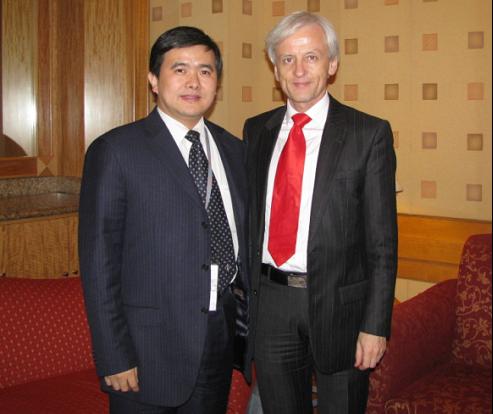
Recorder&Editor: Sophie Shi ss@e-works.net.cn




